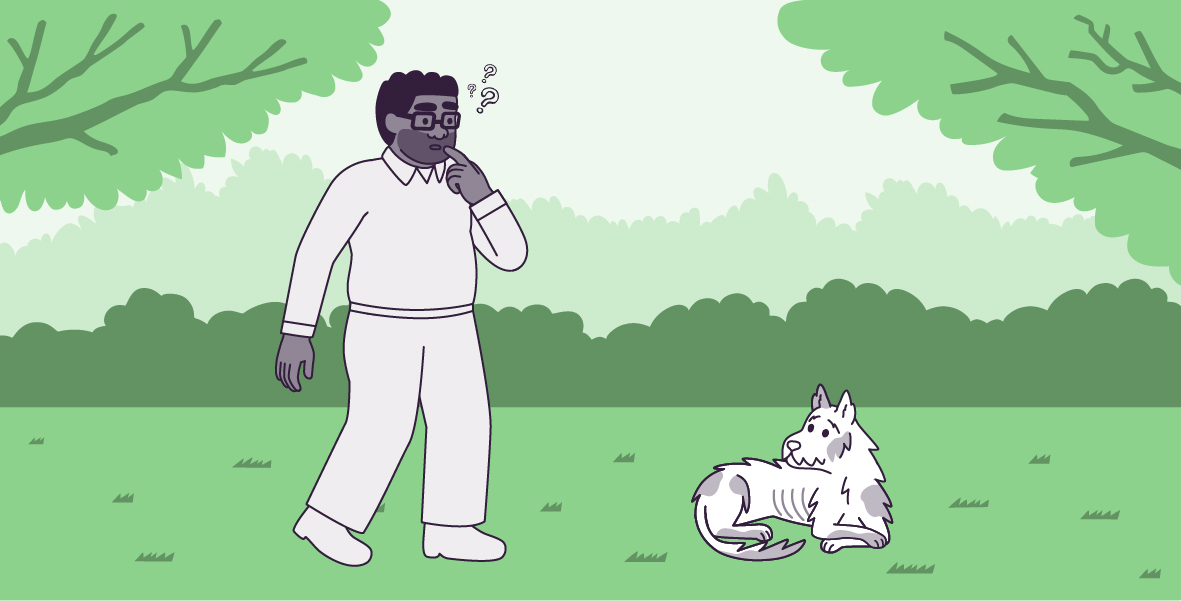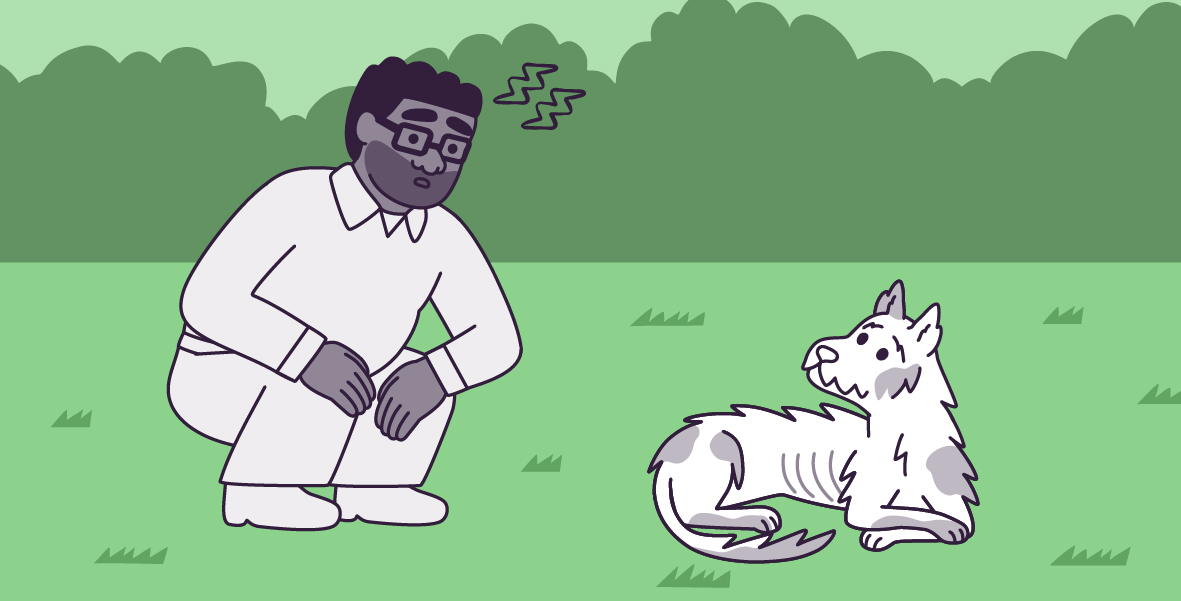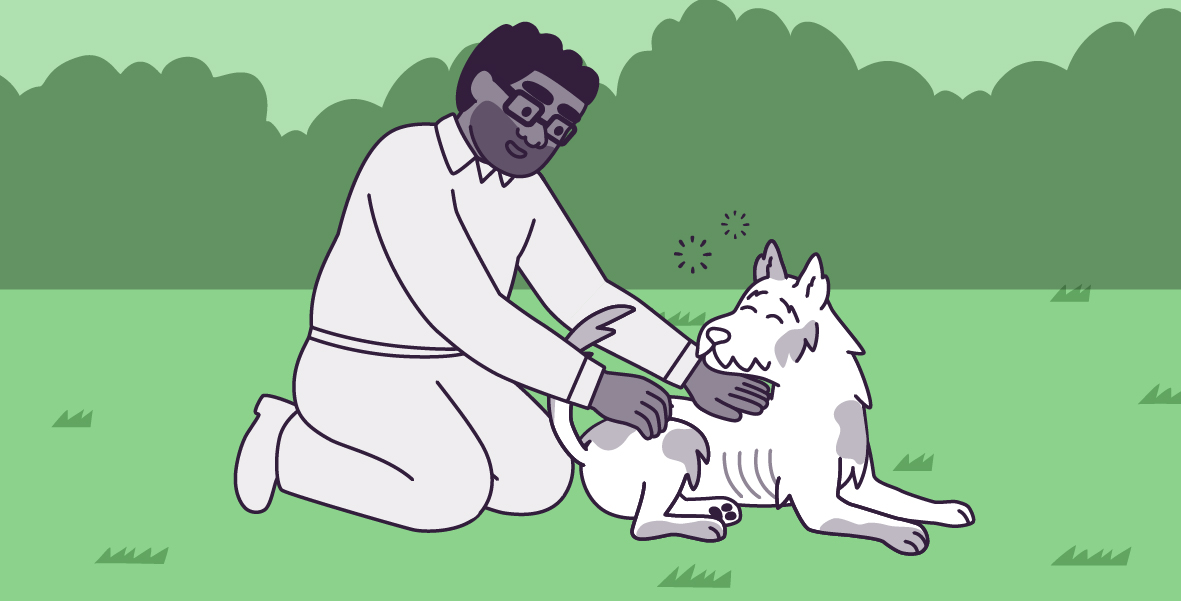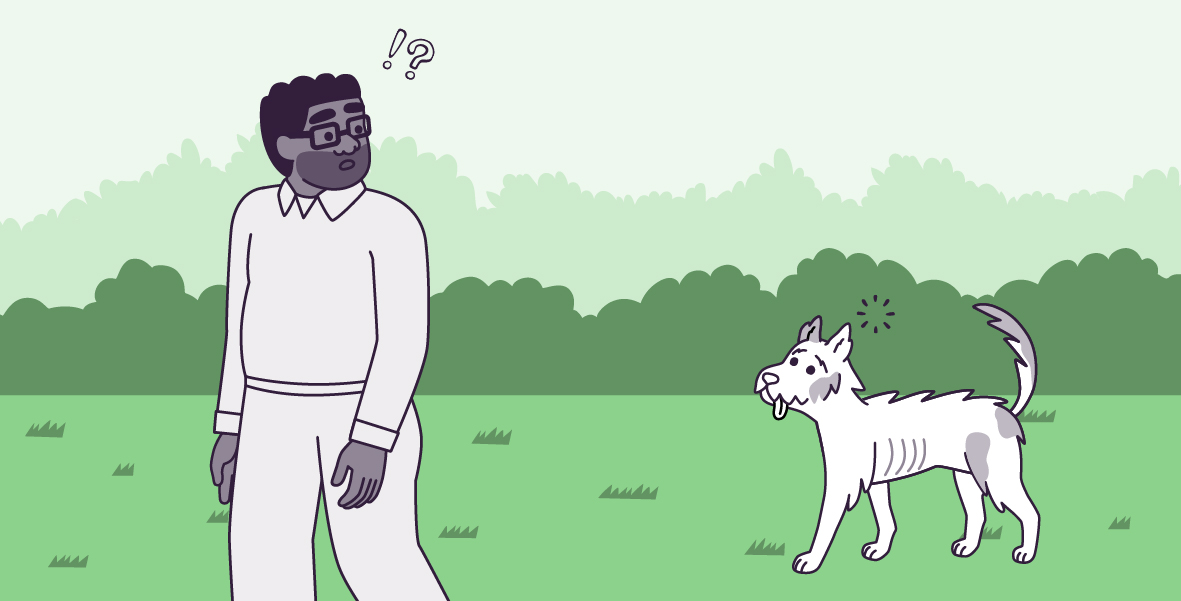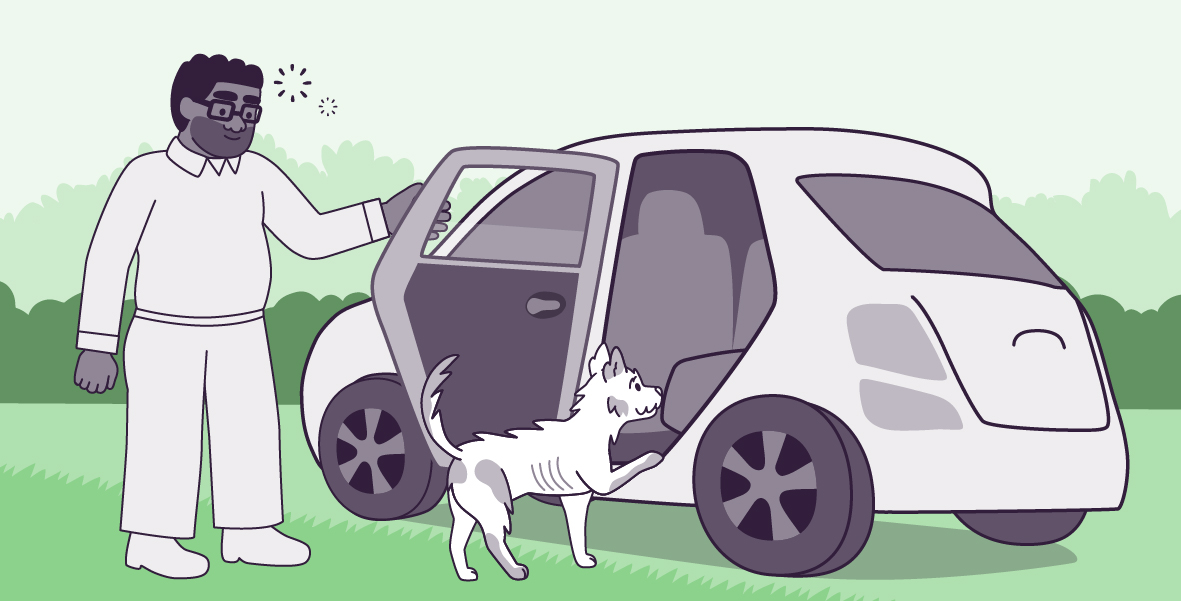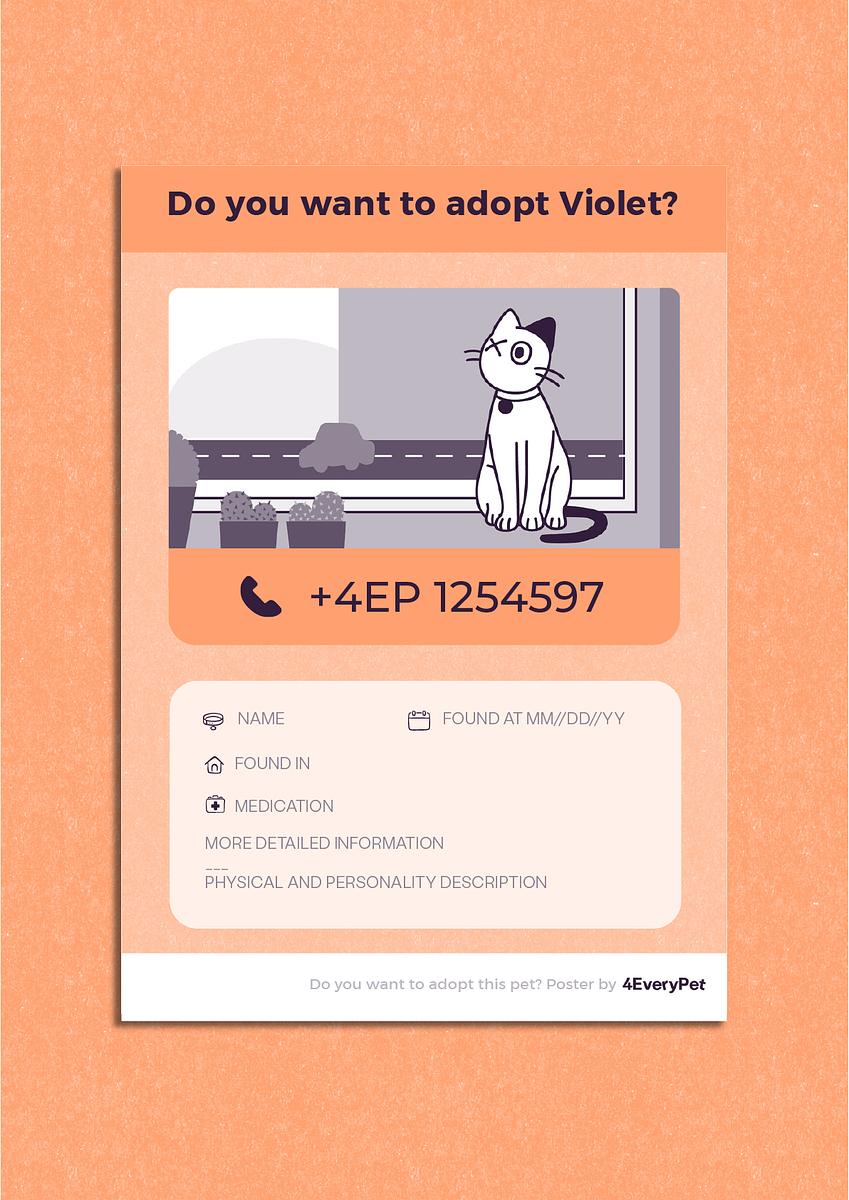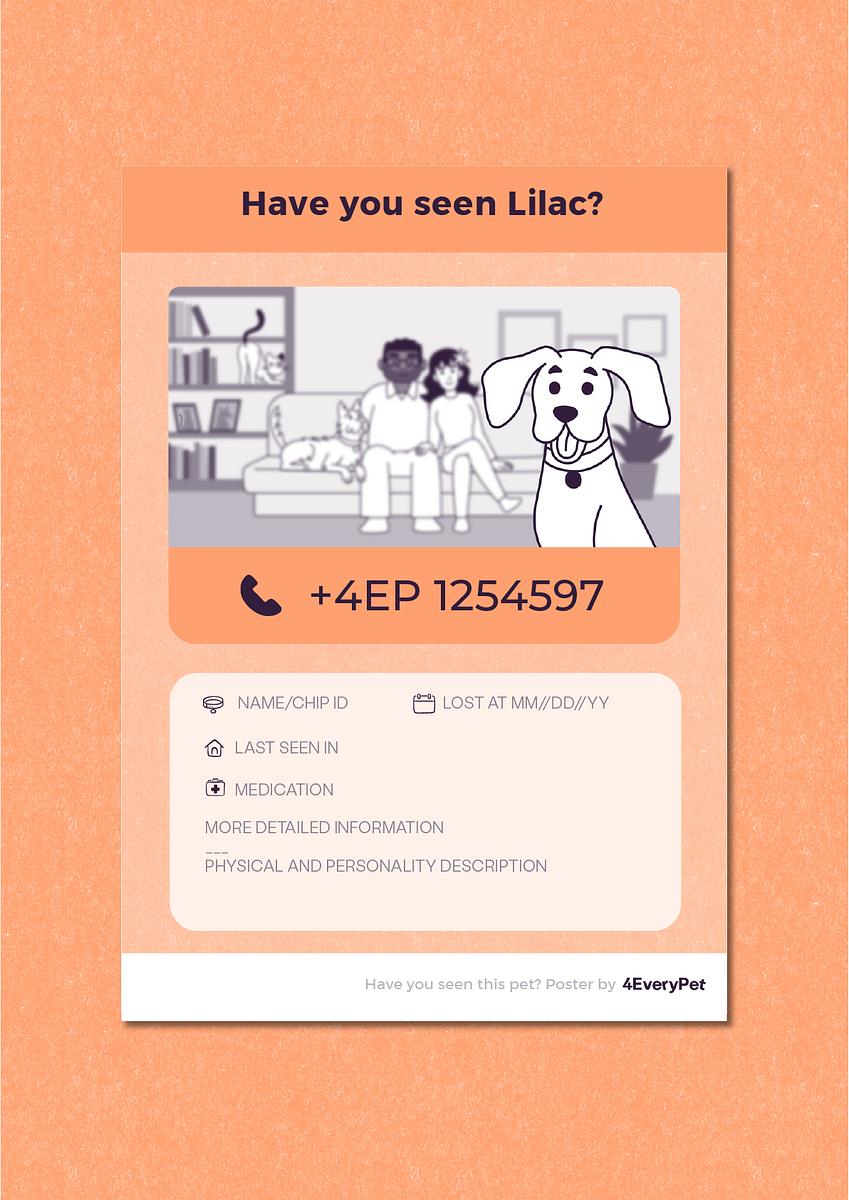Finding a pet alone is always a stressful situation. What can you do? The pet may be a stray, lost from their family, or on their regular outside walk alone. There is no way to know for sure in the first few moments. To assess the situation and what to do next:
- Observe if the pet is in immediate danger or is in a safe place;
- Check if the pet is injured and needs veterinary care;
- See if the pet is very young, senior, or sick and can't survive on their own on the street;
- See if the pet looks very thin, hungry (looking for food), dirty, or shows signs of having been on the street for a while;
- See if the pet looks well cared for and isn’t used to being on the street alone, or if they have a collar and ID tag;
- Observe if the pet looks scared, reactive, or is seeking people's attention.
If the pet is injured or in immediate danger, assess if you can approach them safely. If it's safe to approach and the pet is comfortable with you, take them to the vet and check for a microchip ID. Hopefully, they have a family looking for them, and you can call them right away!
If you find a pet in need of immediate veterinary care and you're not sure if you’ll be able to find their family later, be prepared to cover the cost and talk to the vet about your options in this situation. You can contact local pet shelters and rescue associations, or ask for help from your local pet-lover community online.
If the pet is afraid or reactive, call the appropriate authorities for help! Don't put yourself or the pet in danger trying to help them. Always take safety precautions when trying to rescue a pet! If the pet runs away from you or is uncomfortable when you approach them, take a picture, if possible. You can share the picture online or show it to anyone who may know or be looking for the pet.
If the pet looks like a stray pet, you can find out if they have a place with shelter, food, and water or if someone cares for them. If so, the pet is a community pet and is being cared for by local people. If not, you can provide food, water, shelter, and vet care. You can check with local pet shelters, rescue associations, vet clinics, or other pet services in the area to see if they know the pet or someone who would like to adopt them.
Shelters and rescue centers receive lost and stray pets every day. Understand their limitations if they cannot take in or financially support the pet you found. They are doing the best they can, and so are you. Try to find a solution that works best for everyone, and be empathetic to yourself and all involved if the ideal scenario is not possible.
If you think you have found a lost pet, someone may be looking for them. Prepare a Found Pet Poster and post it where many people can see it. Social media and lost and found pet websites can also be helpful. Check to see if there are any lost pet posts for the pet you found.
Don't always assume that someone abandoned the pet or that their family wasn't careful with them. Accidents can happen to anyone. Be kind! When you find the pet's family, update the online posts and remove the posters. Inform the people who are looking for the pet's family. They will be happy to know!
Check local laws regarding pets. Depending on where you live, there are different procedures for lost pets. Make an informed decision about what to do after contacting the appropriate authorities. If you don't find the pet’s family immediately, wait a holding period (depending on local protocols) for the pet’s family to be found. Unfortunately, many pets don't have families or can't be found. In this case, you don't officially become the pet's family. You must comply with state or local requirements (microchip, vaccinations, licenses, or other protocols).
Some pets go out alone for a walk, or to explore the neighborhood. Most of the time, they return home safely. Ask around if anyone nearby knows the pet and if being alone is normal for them. If so, let them go for their walk and return home. If you are unsure, the best way to find your pet’s family is to go to the vet and ask them to check for a microchip ID.
Every pet lover and pet family empathizes with a lost or stray pet. If you have the means, take the pet off the street while you look for their family or an adoptive home. You can become a foster family until you find a loving family.
But before rescuing them, consider what you will do next. Be responsible for yourself, the pet you found, and your pet family. If you take the pet home, make sure they are healthy and friendly with your pets. If they are not, take them to the vet and keep them separate from your pets until they recover, or it is safe to be together.
That’s it!
Stay tuned for our next blog post.
Thank you for reading!
4EveryPet can only exist thanks to your support. Please share this blog post or buy us a Ko-fi to help keep our content available 4everyone!

